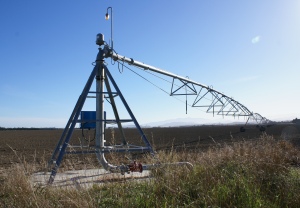On my adventure to the north I learnt of some mega earthworks near Geraldine, whats it all about? find out here.
Basically this is an initiative to store water when there’s lots and release it to farmers when there’s not enough.
This gives farmers the chance to collect all of their allocated water (as in their resource consents) and use it when it is most needed. Sounds like good news for all – I think…
Before I support this as a positive initiative I’d like a little more information:
 ?? Taking water at high flow times seems like it will be better for the health of the river (no need to take water at low flow times and less chance of it drying up entirely). And good for the farmers – a more reliable source of water = more reliable product and minimization of losses. But who measures how much water the river needs (what does 110 cumecs look like in the river?) and will there still be enough ‘flood’ type high flows to keep the braided rivers clear of weeds and debris? I’ve seen an awful lot of weedy riverbeds on my travels and it’s worrying.
?? Taking water at high flow times seems like it will be better for the health of the river (no need to take water at low flow times and less chance of it drying up entirely). And good for the farmers – a more reliable source of water = more reliable product and minimization of losses. But who measures how much water the river needs (what does 110 cumecs look like in the river?) and will there still be enough ‘flood’ type high flows to keep the braided rivers clear of weeds and debris? I’ve seen an awful lot of weedy riverbeds on my travels and it’s worrying.
 ?? How is breeding ‘sport’ fish an environmental benefit? On the surface it seems like a good idea but it’s really only good for the developers image and the sport fishermen – sport fish such as trout are a huge pest problem for our beautiful natives, I’d like to see something done for them.
?? How is breeding ‘sport’ fish an environmental benefit? On the surface it seems like a good idea but it’s really only good for the developers image and the sport fishermen – sport fish such as trout are a huge pest problem for our beautiful natives, I’d like to see something done for them.
 ?? Does this ultimately mean that more farms will find it possible to convert to dairy or expand existing units? While I support dairy in some circumstances it’s better for job opportunities, land health and animal welfare (among other things) if operations are smaller. Dryland farming has it’s place in our culture and our landscape.
?? Does this ultimately mean that more farms will find it possible to convert to dairy or expand existing units? While I support dairy in some circumstances it’s better for job opportunities, land health and animal welfare (among other things) if operations are smaller. Dryland farming has it’s place in our culture and our landscape.
What do you think??


